Contents
Speedometers are a significant instrument installed on a motorbike in order to monitor the speed that the rider is going. However, many riders are wondering if the speedometer is actually an essential tool for the rider.
Are speedometers required on motorcycles? The answer is yes. Despite some regions and countries that don’t have a law on having a speedometer on your motorbike, it is still considered as a vital safety tool for a rider. In addition, it provides other functions such as a built-in odometer, which is a must-have on all existing vehicles. In the United States, 16 states have deemed the speedometer as a necessary instrument by law. While in the United Kingdom, riders absolutely must have a speedometer on their motorbikes.
Many riders do not think that a speedometer is a necessary tool on the motorbike. However, it still proves to be an essential safety instrument, especially in regions where monitoring speed for speed limits are enforced by law (e.g. the United States). Read on to find out more about existing speedometer laws and about how speedometers are used.
Motorbike Speedometer Regulations
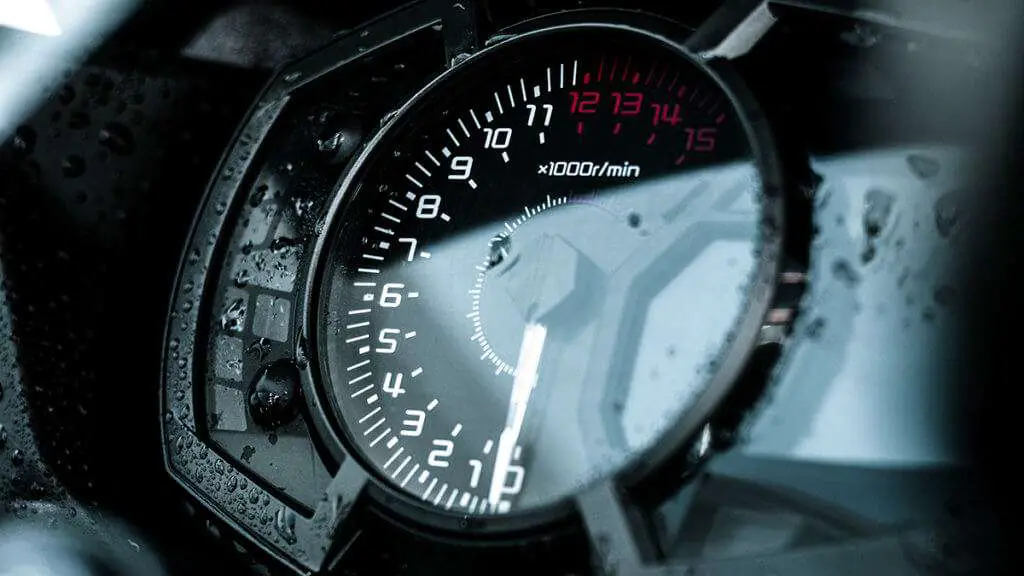
The United States follows the US Motorcycle Safety Foundation (MSF) for the most updated laws on necessary gears and equipment on motorcycles state-by-state. On the US Motorcycle Safety Foundation (MSF) as of June 2015, there are 16 states that require the presence of a speedometer/odometer by law which includes:
- Connecticut
- Delaware
- District of Columbia
- Iowa
- Louisiana
- Maryland
- New Hampshire
- New York
- North Carolina
- North Dakota
- Oklahoma
- Pennsylvania
- Rhode Island
- Utah
- West Virginia
- Wisconsin
Riders in the United States must be aware the laws vary state-by-state. Crossing a state line may mean a complete change on motorcycle gear and equipment law. In addition, the law can also vary between on and off-road motorcycles.
United Kingdom (UK) follows the UK Road Vehicles Regulations of 1986. This includes the region of England, Wales, Scotland, and Northern Ireland. Based on the Regulation of page 35, “every motor vehicle shall be fitted with a speedometer which, if the vehicle is first used on or after 1st April 1984, shall be capable of indicating speed in both miles per hour and kilometres per hour, either simultaneously or, by the operation of a switch, separately”.
However, according to the GOV.uk, you do not need a speedometer installed in order to pass your motorbike’s Ministry of Transport Test (MOT) which is an annual vehicle safety test in aspects of roadworthiness and exhaust emission. The test is required in the UK for vehicles over three years old.
Functions of a Speedometer
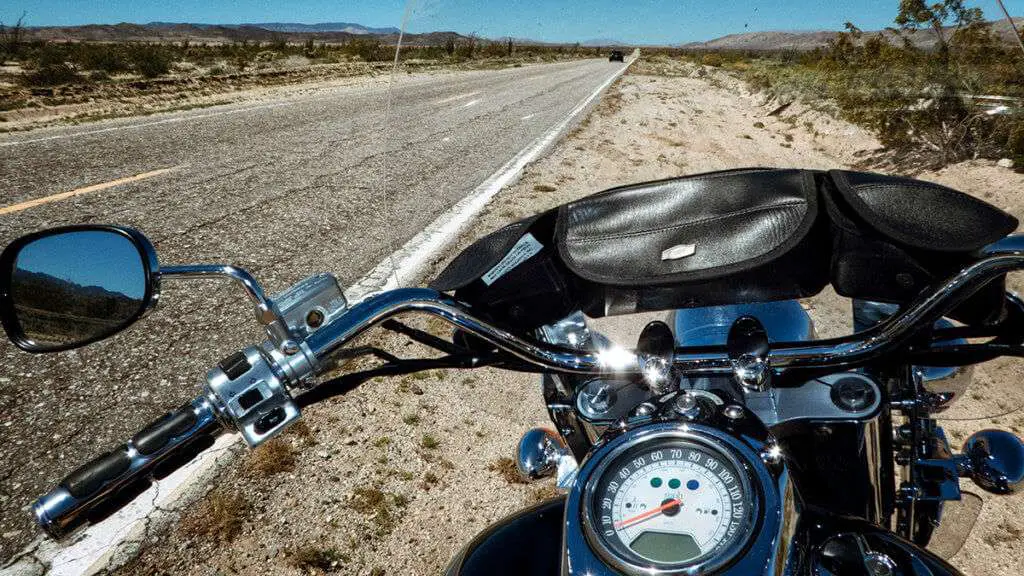
A speedometer is an instrument attached onto the dashboard of a vehicle which provides the driver with instant readings of speed. Speedometers will usually display the speed of the vehicle in miles per hour (MPH) or, kilometers per hour (KPH) or even both.
The traditional speedometers or analogue speedometers use gears, wires and, needles which points out the speed of the vehicle. Most modern vehicles these days use speed sensors and display the speed of the vehicle digitally. In addition, the digital display variety often has the ability to switch between MPH or KPH, whichever the rider prefers.
In some modern or custom-made motorbikes, the speedometer itself can be a complete dashboard instrument which would display a variety of sensors and gauges. These include:
- Oil pressure gauge
- Coolant temperature gauge
- Fuel level gauge
- Tachometer
However, the speedometer will always be the most prominent gauge in terms of how many times you look at a display sensor while you’re riding.
Another thing to know is the two-milometers, or also known as the odometers which are usually installed within the speedometer. One milometer is used to record the total amount of miles or kilometers the vehicle has completed, and the other milometer is be used to record the length of specific journeys.
Speedometer Common Issues
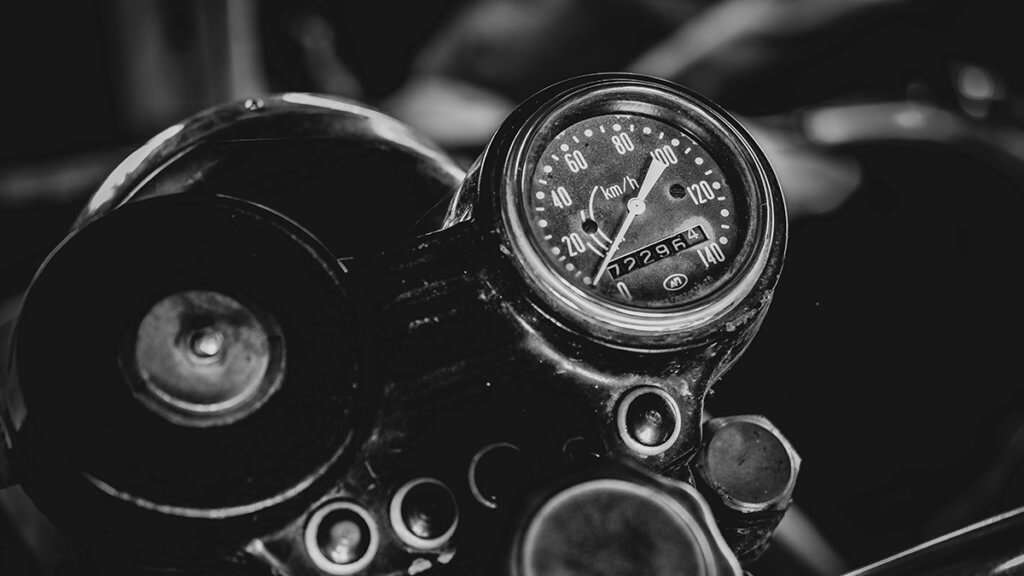
The speedometer is a pretty important tool for the safety of the rider. However, experienced riders don’t find the speedometer a stranger to the occurrence of technical issues. There can be a multitude of reasons for the speedometer to malfunction. The occasional problems for a malfunctioning speedometer include the following:
- Faulty Sensors
- Bad Wiring
- Dial Malfunctions
The most common speedometer problems would require a replacement such as the speed sensor or cable, depending upon the motorcycle and the type of speedometer (analogue or digital). These types of repair jobs are simple to perform and can be done by the rider.
Another common error that occurs on speedometers are errors on the accuracy of speedometer reading. If a speedometer happens to be inaccurate, it displays a lower speed or a higher speed than the vehicle is traveling at. In this case, riders would believe that they are not speeding, when in fact they are. For example, A speedometer that over-reads will display 100mph when in fact, the vehicle’s actual speed is 90mph.
In most cases in the EU, speedometers are inaccurate up to 10 percent on over-read. This factor can be traced to the ECE Regulation No. 39; a document which entails speedometer accuracy for vehicles that are sold within EU countries. Based on the law, a speedometer can over-read by as much as 10 percent, plus 4 KMH at a specified speed.
However, under no circumstances can the speedometer under-read, which means that the driver can possibly be speeding without their awareness.
Other several factors that can affect the accuracy of a speedometer include:
- Worn tires – Speedometers are calibrated to new or unused tires. When the tires are worn, the diameter or traction decreases which may affect the accuracy of the speedometer
- Tire pressure – Speedometers are calibrated with a default tire pressure of the used tires. A change in tire pressure affects the accuracy of the vehicle’s speedometer readings
- Rim size – Much like the effect of tire pressure and/or worn tires, changing the diameter of the vehicle’s rims will affect speedometer’s accuracy
- Differential ratios – changing the gearing of your differential or gearbox will affect speedometer accuracy
- Vehicle Load – Speedometers are calibrated only with the load of the vehicle itself. Additional load such as installing new gears, equipment, or having an extra passenger may alter the speedometer. It will especially show during long-distance travels
- Speedometer Needles – The size, length, and shape of the needle can make it difficult to tell what exact speed the vehicle is on
Current Speedometer Technology
Almost all motorcycles that are currently manufactured are installed with speedometers with special sensors. These sensors are:
- Triggered by the teeth of a transmission gear
- Slots in an automatic brake system (ABS) wheel ring
These sensors send a wave signal to the engine control unit (ECU), which then calculates the speed from the frequency of the signal. However, a device such as the SpeedoHealer (pictured above) can be installed into the sensor wire, which is already built in the speedometer.
SpeedoHealers are just one of many devices known as “speedometer calibrator”. These devices speed up or slow down the frequency of the signal and recalibrates the speedometer readings accordingly. These tools are essential to recalibrate speedometers for any error in gearing, tire change, or any other technical issues.
However, using speedometer calibrators on bikes equipped with ABS is not to be recommended. On bikes with ABS, the speedometer works from the same sensor wiring as the ABS to measure speed. But by installing a speedometer calibrator onto the sensors (and therefore the ABS) this device could directly affect the motorbikes ABS. This issue is to be avoided, especially since the ABS is needed the most.

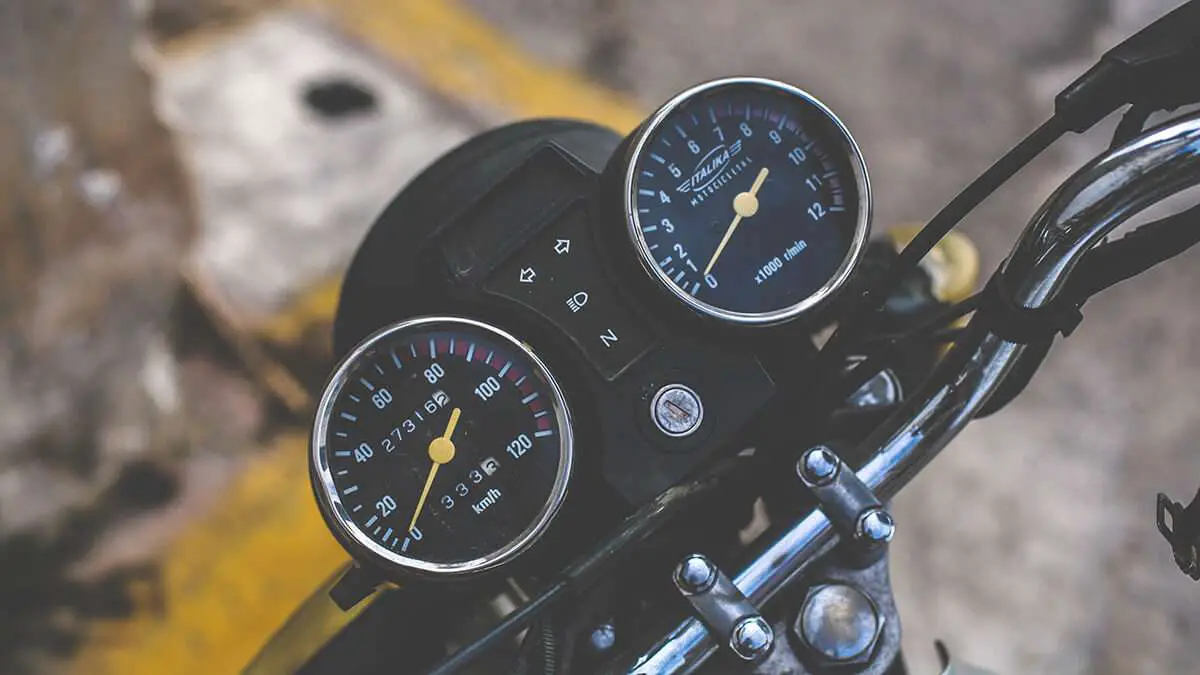

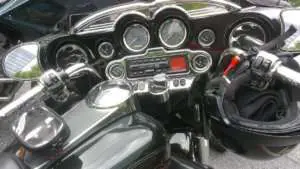 Do Motorcycles Have Radios? Do They Make Riding Better?
Do Motorcycles Have Radios? Do They Make Riding Better?  Are Heavier Motorcycles Really Better?
Are Heavier Motorcycles Really Better?  Why Ride A Motorcycle? 5 Reasons It Makes Your Life Better
Why Ride A Motorcycle? 5 Reasons It Makes Your Life Better  What Are Motorcycle Neck Braces? Should You Wear One?
What Are Motorcycle Neck Braces? Should You Wear One?